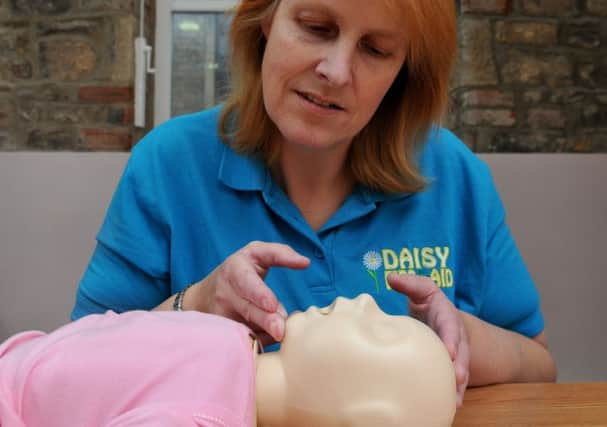Family: Why parents should brush up on their first aid


A new study shows 21% of mums and dads have been forced to give a child emergency first aid, but only 31% said they felt confident doing it.
Instead, 38% were terrified the child could die, 20% were worried they’d be left injured, and 11% panicked and froze completely.
Advertisement
Hide AdAdvertisement
Hide AdAs a result, St John Ambulance and the parenting channel ChannelMum.com have teamed up to produce a new video first aid course that features vital first aid techniques and signs of common illnesses, plus tips from TV GP Dr Dawn Harper, and real-life experiences from mummy vloggers like Charlie O’Brien.
The seven-video series can be viewed at www.channelmum.com/topic/first-aidIsobel Kearl, national training officer at St John Ambulance, says the videos are a great starting point for parent first aid and highlight how easy and quick it is to learn essential lifesaving skills.
And she stresses: “For parents looking to further their first aid knowledge, our basic first aid courses take between just three to six hours and give hands-on experience.
“Once parents know what to do, they have the confidence to take action quickly and are able to act if needed.”
BIGGEST FEAR
Advertisement
Hide AdAdvertisement
Hide AdThe ChannelMum study found the most frightening first aid scenario for parents is choking, with 53% saying it was their biggest fear.
Almost a quarter of parents have faced the reality of their child choking.
The next most alarming situation is a seizure – with 14% of parents reporting their child has had one – followed by a severe allergic reaction, experienced by one in 20.
Meningitis was a very real fear for 6% of parents, and 16% have had to treat their child for a burn.
In addition, almost one in 10 has given CPR to a child.
Advertisement
Hide AdAdvertisement
Hide AdThe survey of 2,000 adults showed becoming a parent was the biggest trigger for 55% of parents who wanted to improve first aid knowledge, compared to just 11% who went on to learn more first aid after having a serious accident themselves.
CHILDPROOFING
The poll also revealed 84% of parents attempt to childproof their home to reduce the risk of accidents. However, just 42% keep a first aid kit at home.
And while 82% of families ensure they keep medicines out of children’s reach, over a third (36%) admit they leave laundry items, which can be toxic, within children’s grasp, while 54% have yet to secure TVs to stop them falling.
A further 43% don’t tie up blind cords, despite them being linked to several child deaths.
JUST ONE MINUTE
Advertisement
Hide AdAdvertisement
Hide AdParents correctly identified that one minute a day spent learning first aid and minimising risks can cut the chance of children having a serious accident or needing first aid.
QUICK LIFESAVING TIPS
CHOKING
Always cut food lengthways not across.
Keep handbags out of reach – children commonly choke on money and pen lids.
If your child is choking, never poke inside their mouth as this could push the blockage further down.
BURNS
Any burn bigger than a child’s palm needs urgent medical attention.
Put burns into cold water for at least 10 minutes.
Cover in cling film to keep sterile before getting help.
Advertisement
Hide AdAdvertisement
Hide AdRemove loose clothing but if clothes stick, leave them on until help arrives.
ALLERGIES
Have antihistamines in your home.
Be aware allergies can show up during weaning.
Treat a rash with antihistamines.
Swollen lips or tongue? Get to hospital.
FEVER
Under six months a fever is 38 C. Over six months it’s 39 degrees C.
Never treat children with aspirin - check the label.
Child not getting better after 72 hours? Get medical attention fast.
CPR
ABC – Airways, Breathing, Circulation.
Start with five rescue breaths, then 30 compressions/ two rescue breaths and repeat until help arrives or the child breathes.
Advertisement
Hide AdAdvertisement
Hide AdUse the song Nellie The Elephant as your timing guide. At least 120 compressions a minute.
SEIZURES
If your child has a seizure, place them gently on the floor and clear space around them.
If the seizure lasts more than two minutes, get medical help.
If your child has a seizure without a temperature, get medical help.
MENINGITIS & SEPSIS
Advertisement
Hide AdAdvertisement
Hide AdDon’t wait for the rash – learn the other signs including joint and limb pain, light sensitivity, blotchy pale skin, flu-like illness and cold hands and feet. Babies may have a high-pitched cry.
Be aware sepsis can happen from any infection – signs include no wet nappy for 12 hours, vomiting, convulsions, feeling cold, not feeding and hard to wake.